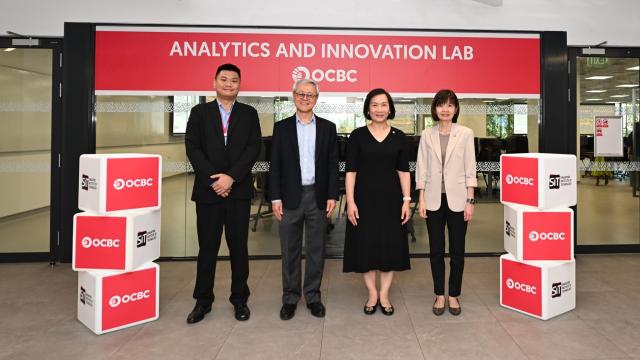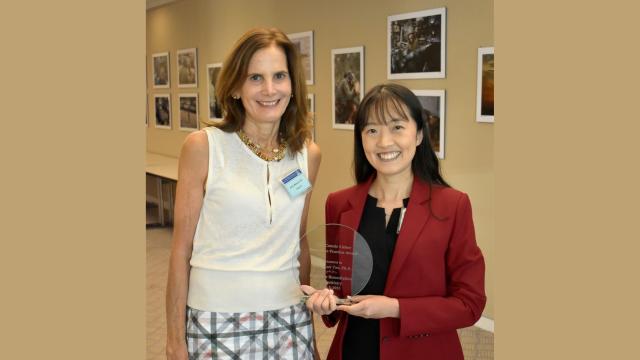In an upscale restaurant, a chef cooks up a storm while a waitress filters in and out of the kitchen anxiously.
While placing her order, a demanding diner had requested for hot water at a specified temperature. The diner had also grimaced at her pasta before insisting that it be returned to be made more spicy - all while shrieking, “Is this the way you treat your customers?”
Such encounters are re-enacted by SIT’s Hospitality Business (HB) students as part of their video assignment under the Career and Professional Development (CPD) II module, which focuses on effective interpersonal communication in the workplace.
“The anecdote in the video was actually inspired by real experiences while I was on the job,” shares Chan Shi Qi, 24, who has since completed her Hospitality Business degree in 2019.
“In fact, the team members could immediately relate to the story as all of us had worked in the service line, where such encounters are common,” adds Mandy Chia, 24. “We worked together on the script: how it should flow, which experiences should be highlighted, and what acronyms could be introduced to make concepts easy for our audiences to remember. Details such as filming locations and props were also brainstormed, as well as how we were going to edit the video.”
Despite on-set challenges such as lighting issues, the team pressed forward to ensure a fruitful shoot. “While it is normal to miss out on some things, it is more important to focus on finding solutions or alternatives on the spot,” says Mandy.
Working on this project – especially during the brainstorming and filming – was particularly enjoyable for Mandy and her teammates. “Most importantly, all of us put our hearts into doing a good job for this video project, and we are all proud of this production,” she beams.
Collaborative Learning
Learning is best when it is interactive and relational, says Mr Brad Franklin Blackstone, Senior Lecturer, Centre for Communication Skills, SIT.
Unlike rote learning and memory work, SIT’s learning environment challenges students to build upon what is presented in learning materials in order to reflect on their previous experiences and apply their knowledge. This means departing from the usual teacher-centred lectures, textbook assignments and tests.

From left to right: Mandy Chia and her teammates Sophia Han, Chan Shi Qi, Jonathan Loo, with Mr Brad Franklin Blackstone, Senior Lecturer, SIT.
“Through hands-on, authentic problem-solving tasks, students can actively explore real-world communication issues in the industry through projects that require them to leverage their workplace-related needs and interests in order to address interpersonal issues.
“Once they have applied their knowledge and their project work reaches fruition,” Mr Blackstone says, “They can share their learning with peers in oral presentations that have a video component.”
It isn’t just about submitting a video, Mr Blackstone stresses. “Students play all the roles: producer-directors, writer-storytellers, photographer-camera operators, actors and editors of their own work, and consumers and critics of their classmates’ video productions.”
“Through the video project, students learn the theory behind interpersonal communication but also practice skills such as working cooperatively, resolving differences and exercising leadership,” Mr Blackstone adds. “These are competencies that graduates need in order to be prepared for career success.”
A similar approach is adopted for a compulsory module within the Systems Engineering (ElectroMechanical Systems) degree programme, also known as SEEMS. Titled ‘Interpersonal and Work Communication’, the module explores the influence of culture, gender, economic status, age and personal characteristics on workplace communication, as well as verbal and nonverbal communication skills in a global work environment.
“Engineering students learn that they must be able to relate with co-workers and clients in order to succeed at the workplace,” explains Assistant Professor Lee Hwee Hoon of SIT’s Centre for Communication Skills. “In the video project, students take on multiple tasks, such as identifying an interpersonal communication issue and discussing criteria for a resolution. Along the way, team members learn to listen to one other, understand different perspectives, and accept diverse views. Participating in this project allows students to learn about building positive relationships with the people they are working with.”
Digital Learning Community
Besides doing the video project, students in both the SEEMS module and CPD II for HB are tasked to build their own blogs in order to post reflections and other written assignments as well as interact in a meaningful way with their peers. This encourages students to both share their knowledge and monitor their own progress. Students are also encouraged to create links to classmates’ blogs, so that they can share their thoughts while giving feedback.

Students are encouraged to build their own blogs to post reflections and interact in a meaningful way with their peers.
“With technological platforms such as email, discussion forums, WhatsApp groups and blogs easily available these days, collaborating to complete a task or solve a problem enables students to learn new skills,” says Mr Blackstone, who has written extensively on pedagogical blogging and uses it in all his modules.
“I’m not surprised that students immediately embrace the blogging assignment and actively share their perspectives online,” Mr Blackstone states. “After all, they’re digital natives who spend much of their time plugged in. In fact, by the end of each term, there are often cases of students producing more writing than was expected. And many of them go to great lengths to provide extensive feedback on their classmates’ posts and they often complement their writing with images.”
Mr Blackstone believes that integrating these various tasks within an interactive multimodal learning environment gives SIT students the opportunity to apply academic principles to real-world contexts.
“Since experiencing multimodal teaching modes at SIT, students have shown great engagement in their classes,” he observes. “They have also demonstrated a great willingness to learn, network, and share their experiences.”
The case study on ‘Toward Significant Learning: Preparing Students for Workplace Communication through an Interactive Multimodal Learning Environment' was featured in the book 'Applied Learning in Higher Education: Perspectives, Pedagogy, and Practice'. The book is available for purchase online from Informing Science Press, Amazon, and Google Play.
![[FA] SIT One SITizen Alumni Initiative_Web banner_1244px x 688px.jpg](/sites/default/files/2024-12/%5BFA%5D%20%20SIT%20One%20SITizen%20Alumni%20Initiative_Web%20banner_1244px%20x%20688px.jpg)


